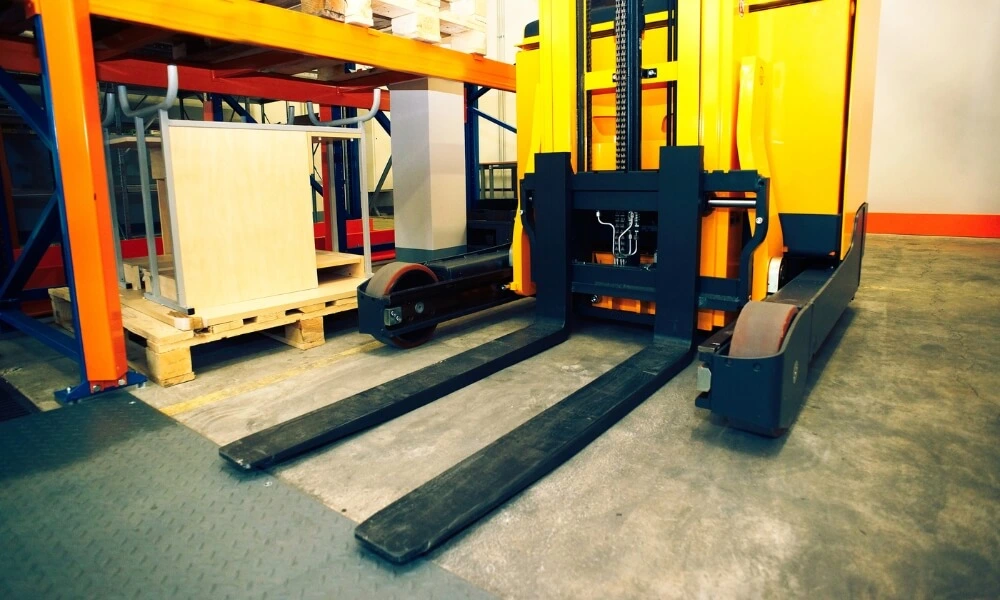In the dynamic logistics and material handling world, versatility and efficiency are the keys to success. Forklifts, the workhorses of warehouses and industrial sites, are no exception to this rule. While traditional forklifts are adept at lifting and transporting palletized loads, there’s a plethora of attachments that can drastically expand their capabilities. From manoeuvring bulky rolls of carpet to meticulously positioning barrels, forklift attachments are designed to cater to specialized needs across various industries.
In this comprehensive guide, we’ll be delving into 12 different forklift attachments and exploring how they can optimize and streamline your material handling processes. Whether you are an experienced warehouse manager looking to boost productivity or someone new to the logistics sector, this article will equip you with the knowledge to make informed decisions about using forklift attachments to their fullest potential. So, buckle up as we lift the lid on these incredible additions that can transform a standard forklift into a multi-faceted powerhouse.
12 Forklift Attachments and Their Uses
Forklift attachments are devices or accessories that can be added to a forklift’s front or other parts to enhance its functionality and versatility. These attachments allow forklifts to handle a wider range of tasks beyond just lifting and moving pallets. They are designed to make material handling more efficient, safe, and suitable for specific loads.
Forklift attachments come in various types, including:
1. Carpet Poles
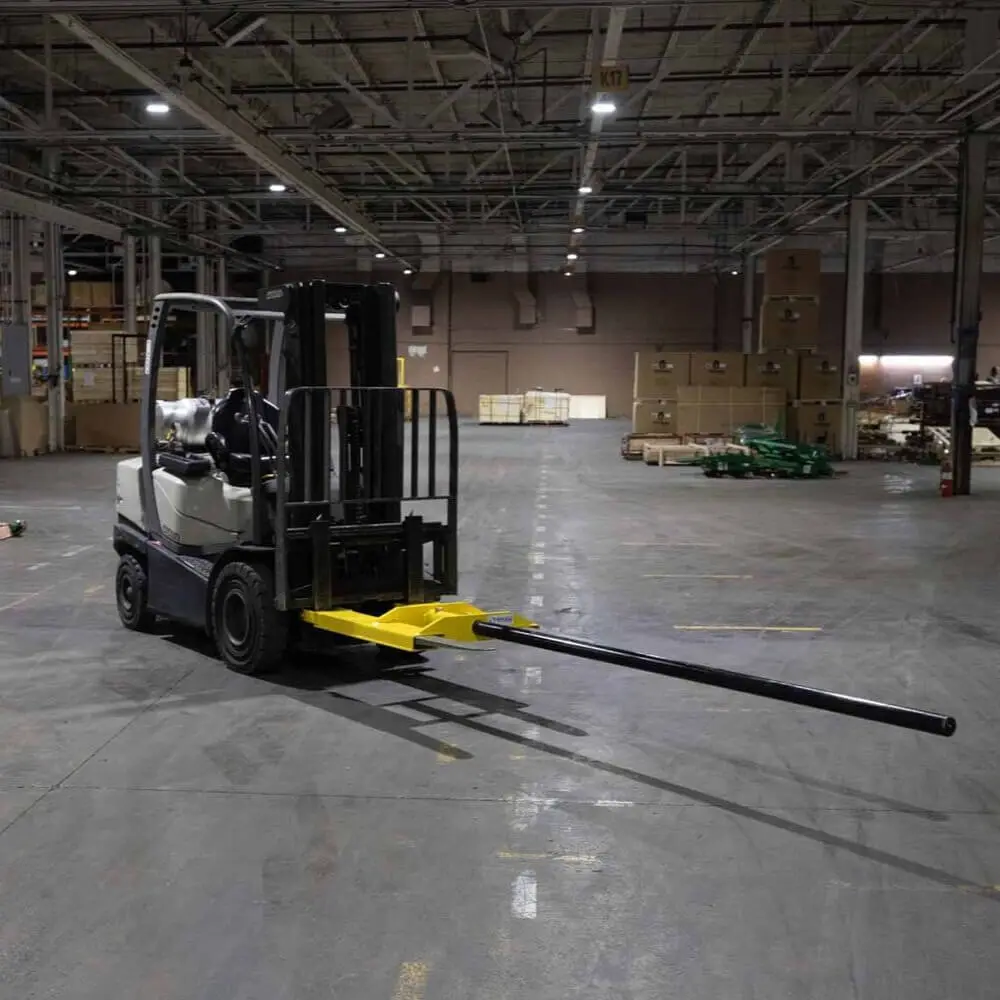
Carpet poles, or rug poles, are long, sturdy metal rods extending horizontally from the forklift. They are specifically designed to transport rolls of carpet or fabric. The pole is inserted into the hollow central core of the carpet roll, allowing for stable and efficient transport. This eliminates the need to use forks, which may not be able to securely hold the cylindrical shape of rolled carpets. Carpet poles can be detachable or permanently fixed to the forklift.
2. Cylinder Caddies
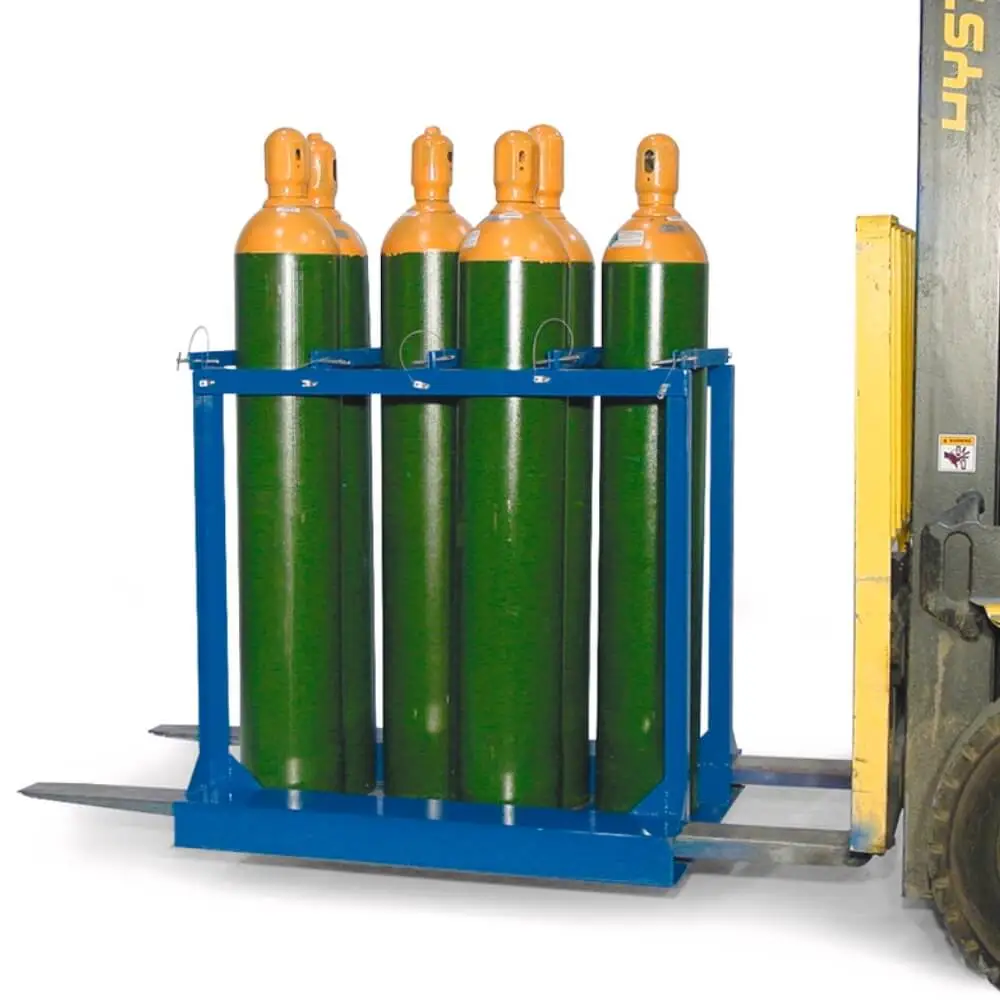
Cylinder caddies are specialized attachments of heavy-duty steel designed to transport cylinders such as liquid propane tanks. The attachment generally has slots for holding multiple cylinders. The cylinders are placed inside the caddy, and safety chains keep them upright and prevent them from falling over. This attachment ensures the safe handling and transport of gas cylinders, which can be hazardous if improperly handled.
3. Fork Extensions
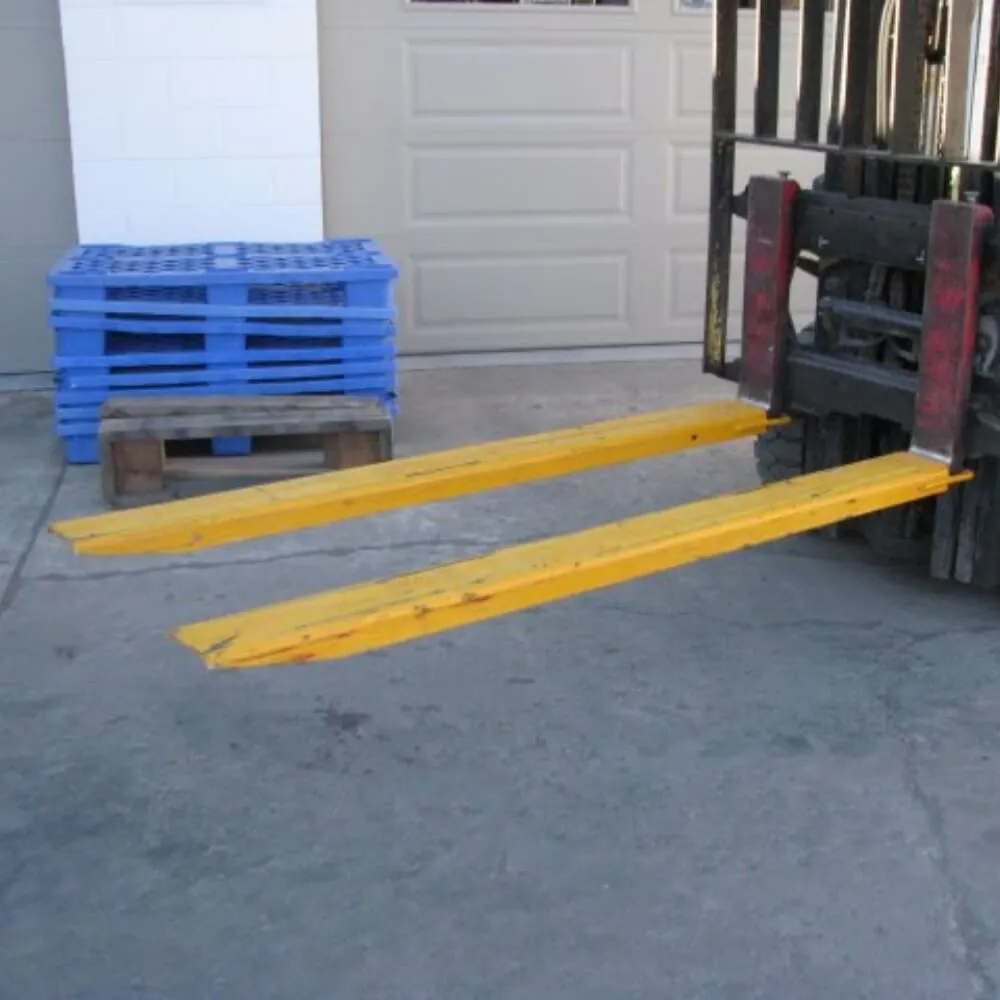
Fork extensions are additional lengths that can be added to the existing forks of a forklift. They are ideal for handling wide or long loads that would not securely fit on standard forks. Fork extensions are typically made from steel and have safety straps that prevent them from slipping off the forks. They must be used carefully, as extending the forks affects the load centre and can change the forklift’s lifting capacity.
4. Fork-Mounted Drum Handling Equipment
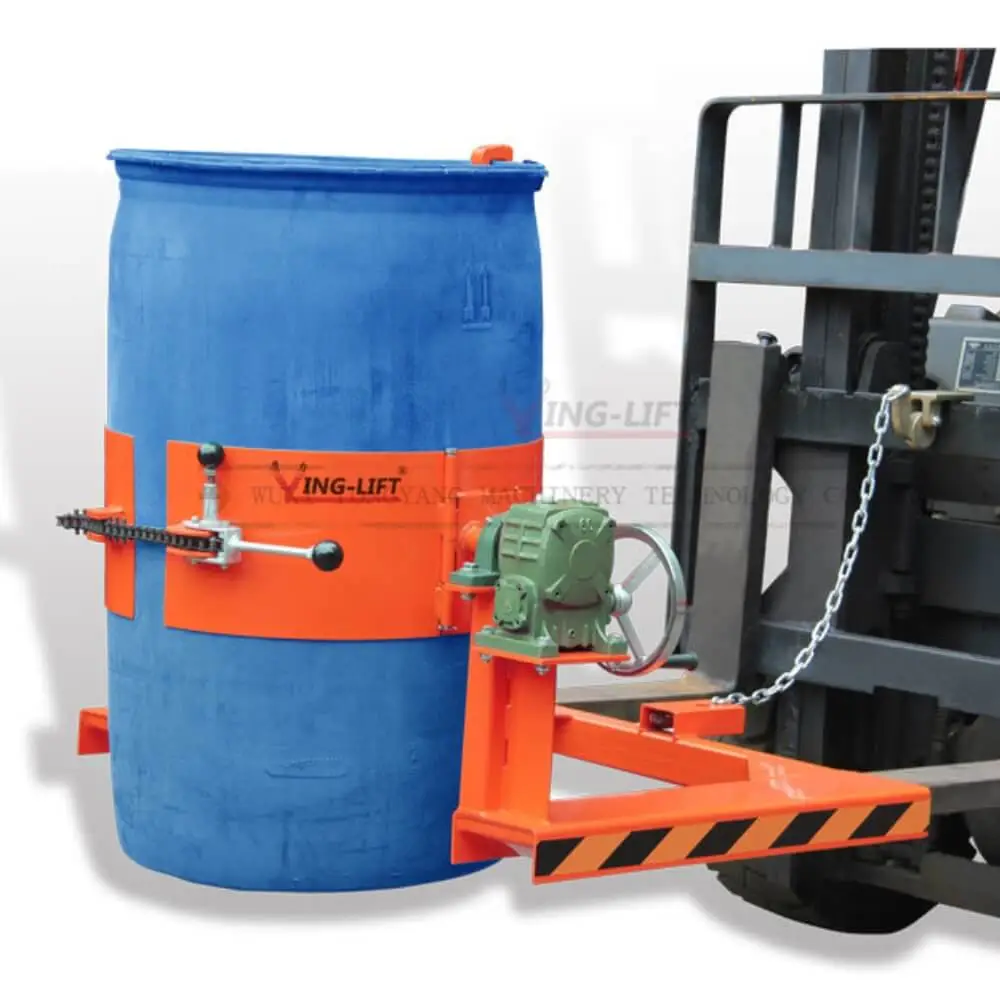
This attachment is specifically designed for handling and transporting drums. It has arched clamps that can securely grip and lift plastic and steel drums. Depending on the design, this attachment can lift, tilt, rotate, or move drums horizontally. Some versions can handle multiple drums simultaneously. This attachment is essential for industries that deal with liquids stored in drums, such as chemicals or oil.
5. Fork Positioners
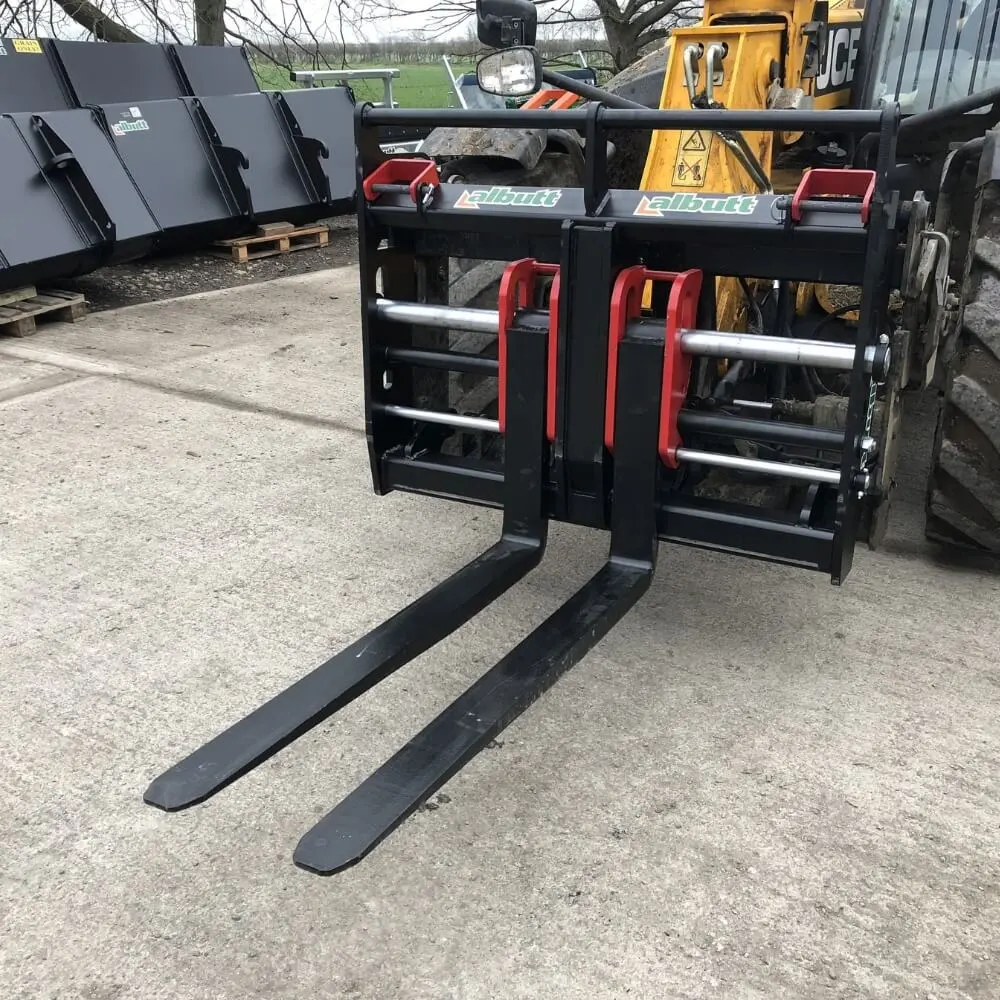
Fork positioners are hydraulic attachments allowing the forklift operator to adjust the distance between the forks and the driver’s seat. This is particularly useful for handling loads of varying widths. By allowing the operator to adjust the forks without getting out of the forklift, this attachment improves efficiency, reduces damage to pallets and products, and enhances safety.
6. Multiple Load Handlers
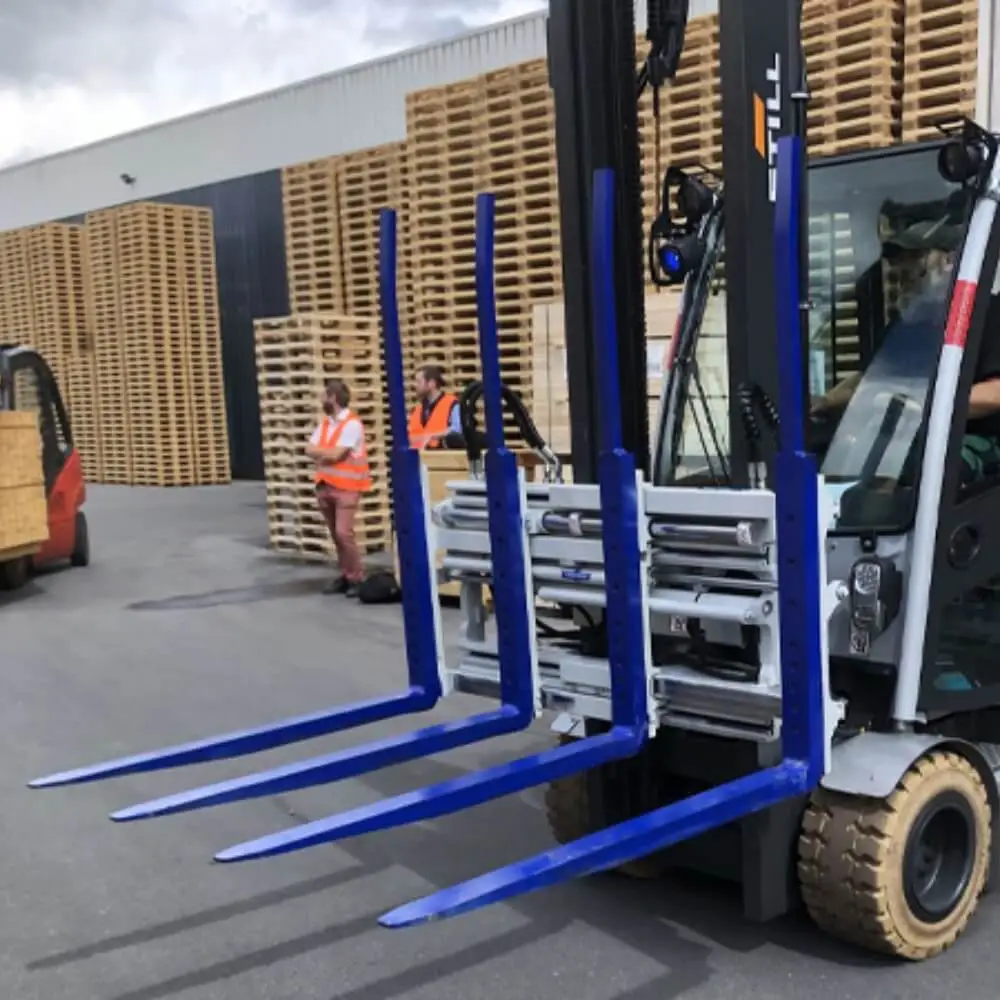
Multiple load handlers consist of additional forks that can be attached to the forklift. This enables the forklift to carry multiple pallets side by side. The attachment is particularly useful in high-volume environments such as warehouses, production lines, and shipping docks. It significantly increases the carrying capacity of the forklift, making the handling process more efficient.
7. Masts
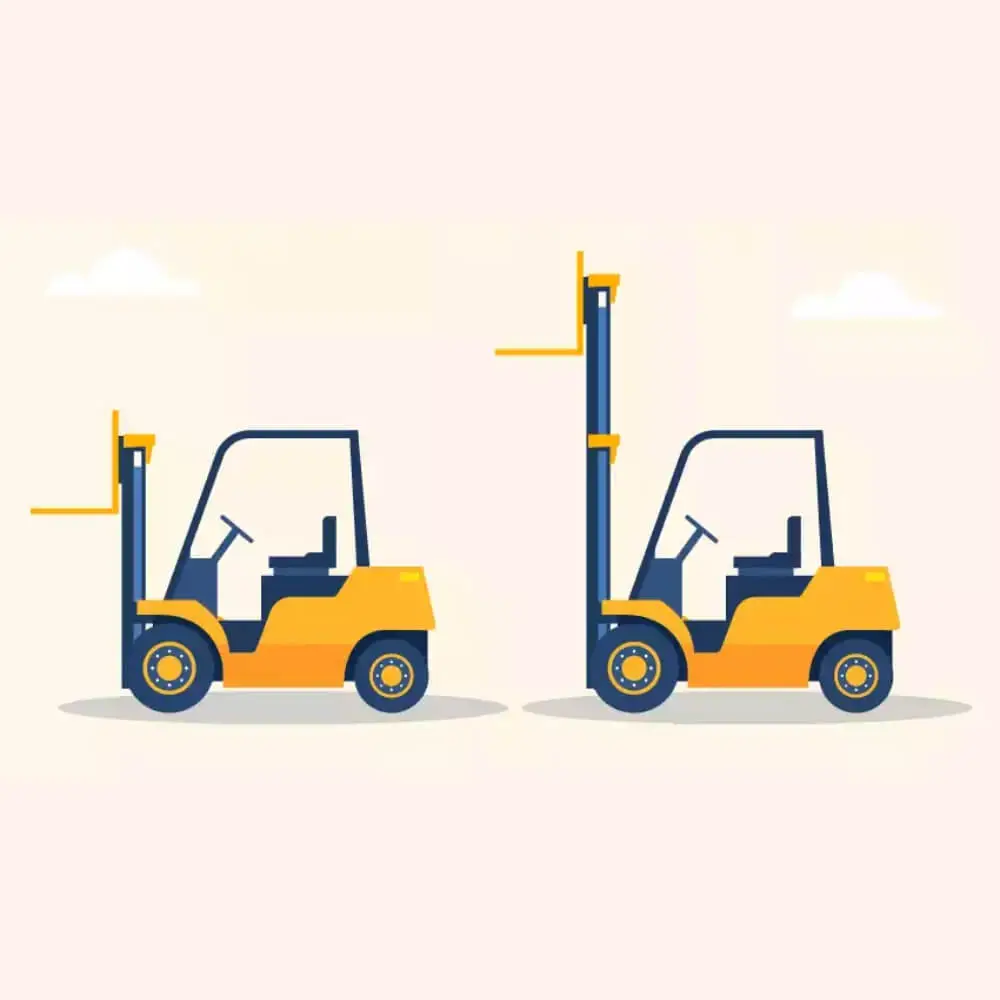
Mast attachments increase the height to which a forklift can lift loads. Standard forklifts come with masts, but mast extensions allow for greater heights. There are single-stage, two-stage, three-stage, and four-stage masts. Each additional stage allows the forklift to lift loads higher. This attachment is crucial in warehouses with high shelving.
8. Paper Roll Clamp
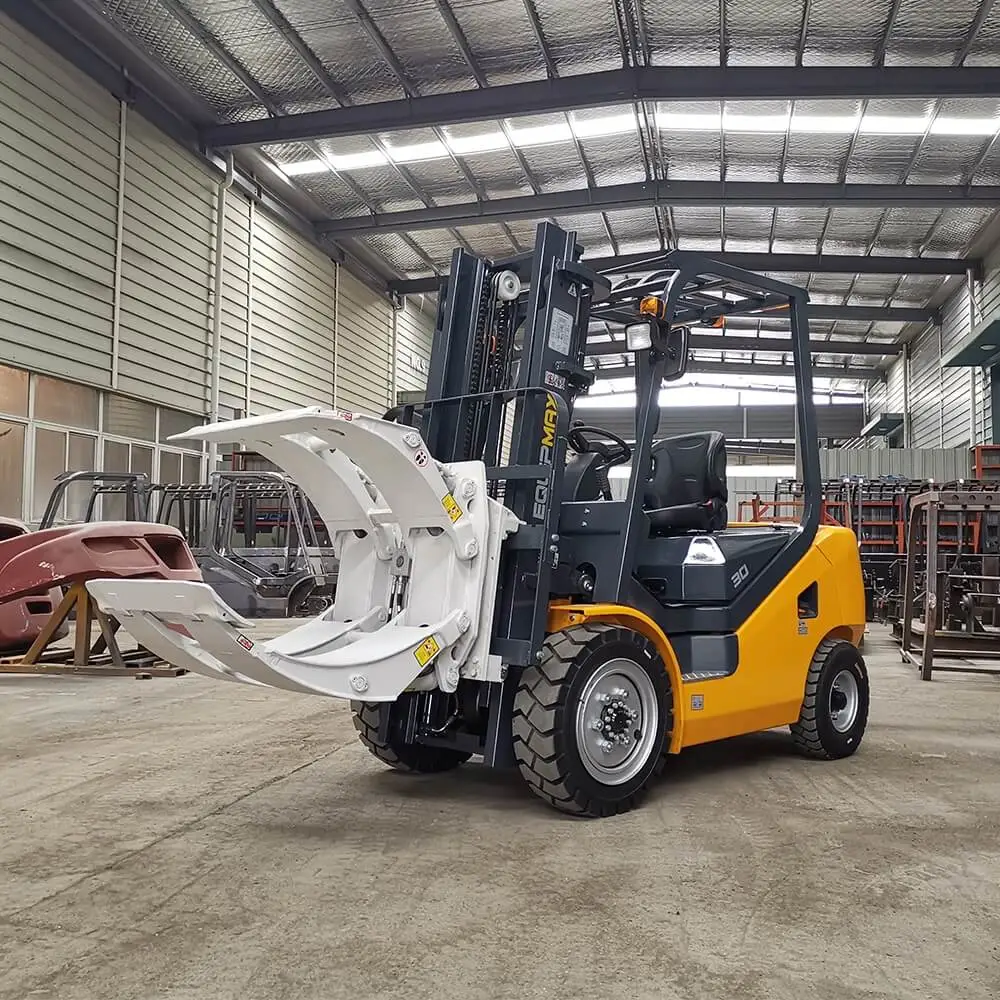
The paper roll clamp attachment is designed to handle large rolls of paper. It uses hydraulic arms with padded clamps to securely grip the roll without damaging the paper. Depending on the model, it can handle varying numbers, sizes, and weights of paper rolls, making it essential in the paper manufacturing and printing industries.
9. Push-Pull Clamp
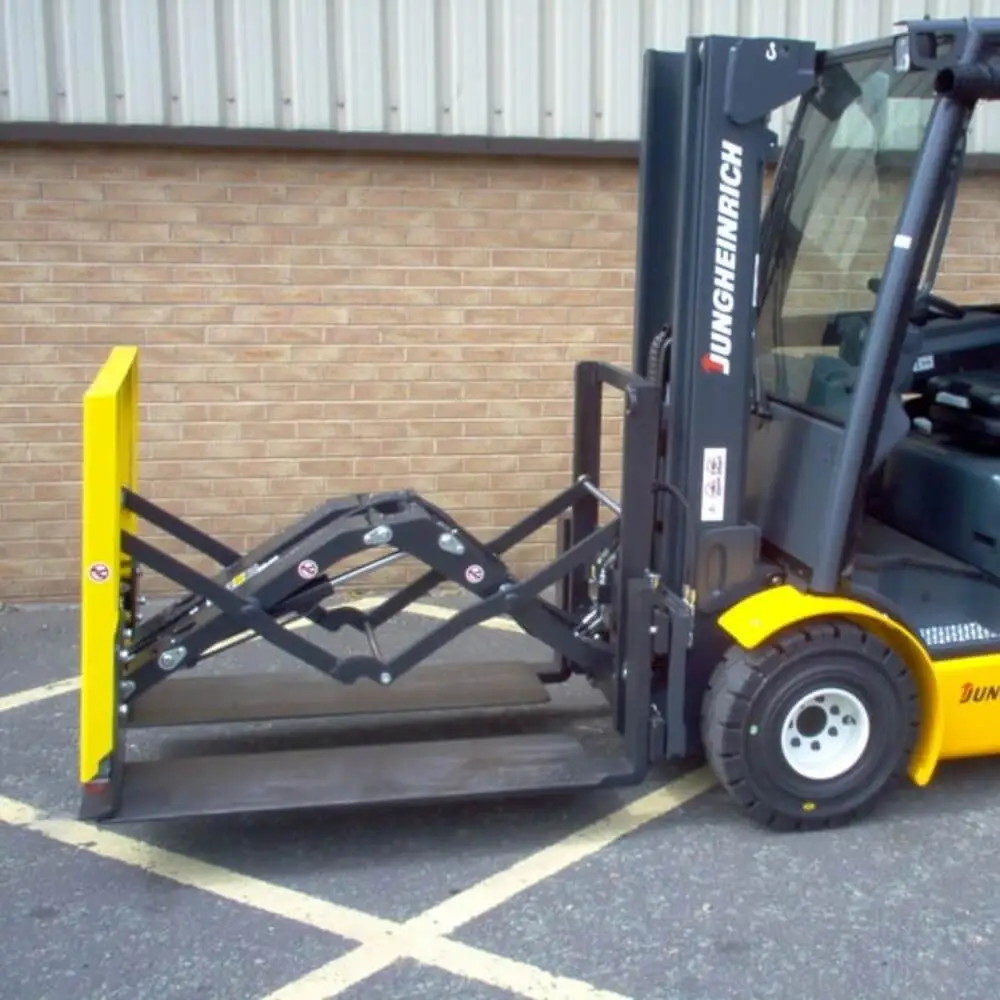
Push-pull clamps are hydraulic attachments used for handling loads without pallets. A flat faceplate and gripper secure the load, and the attachment can extend forward and retract, effectively “pushing” and “pulling” the load. This attachment is ideal for handling goods shipped on slip sheets rather than pallets.
10. Rollerforks
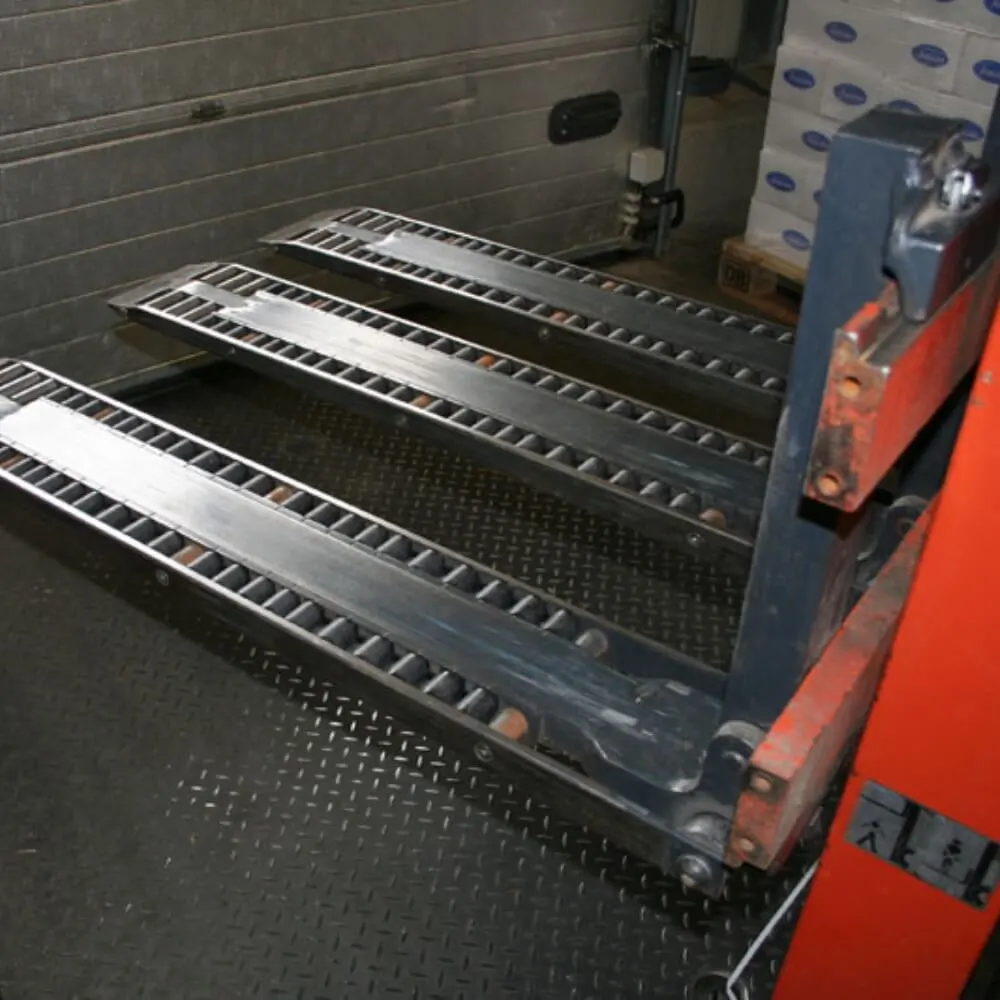
Rollerforks are innovative attachments that use two sets of rollers. When the forklift is lowered, the lower set of rollers touches the ground, causing the upper set to lift, allowing it to easily slide under the load. This is useful for handling loads on slip sheets or for certain types of packaging that do not use pallets.
11. Rotators
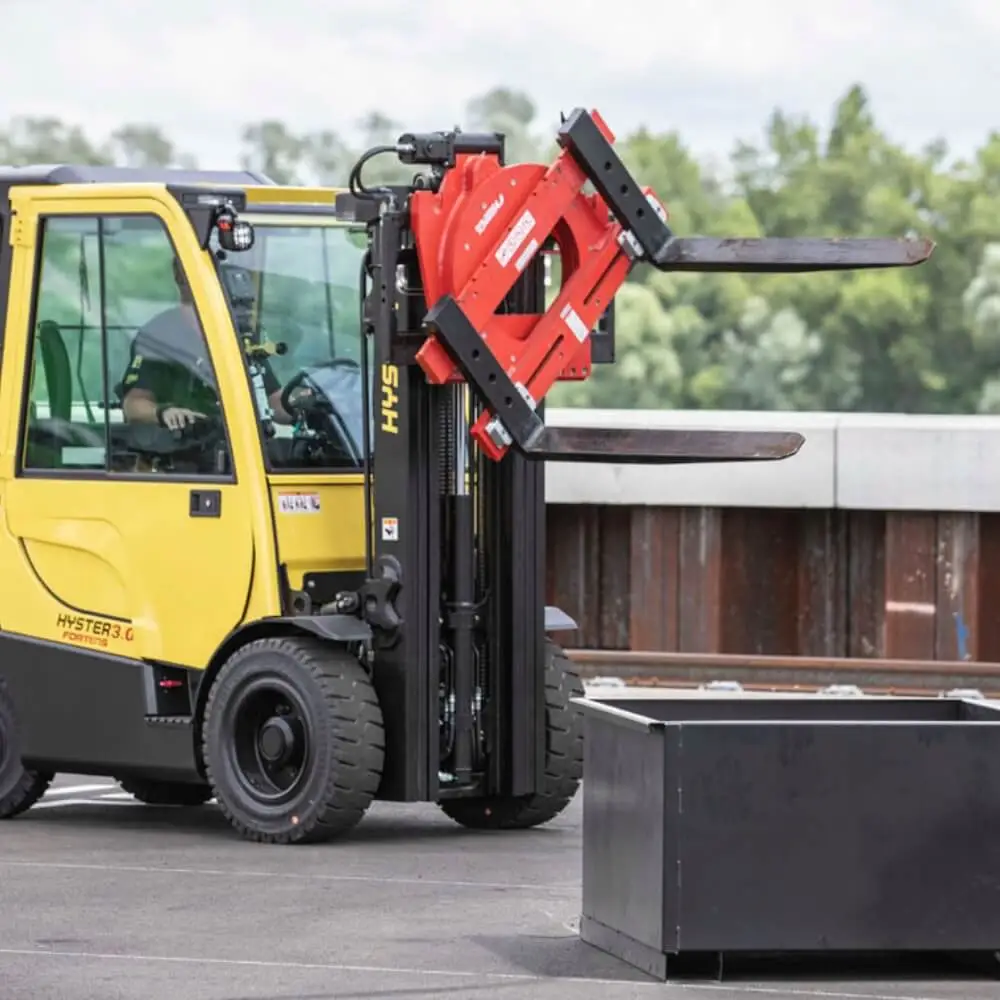
Rotator attachments allow the forklift’s forks to be rotated, usually up to 360 degrees. This is especially useful for handling bins or containers where the contents must be dumped or accessed at different angles. Industries such as agriculture frequently use rotator attachments, where produce is often transported in large bins.
12. Side Shifters
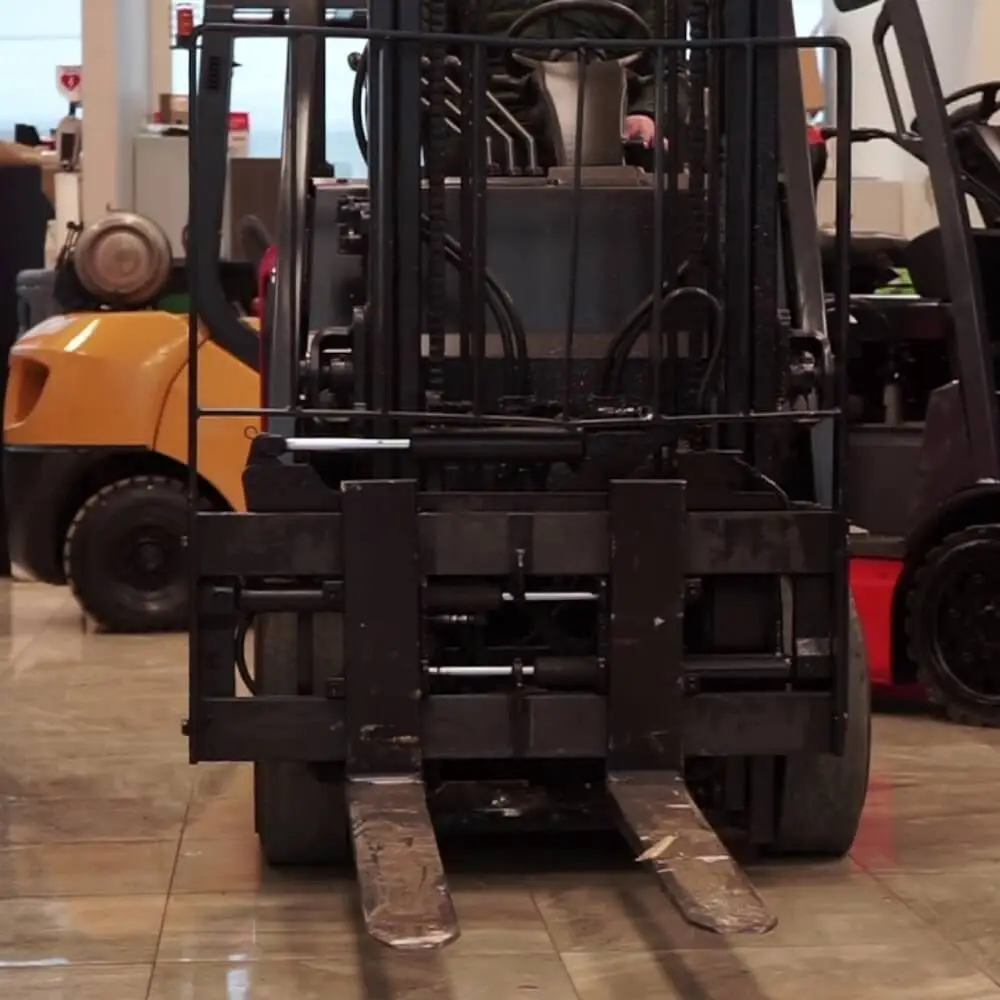
Side shifters are hydraulic attachments that allow the forks to be moved horizontally to the left or right. This is highly beneficial in tight spaces where moving the forklift itself is impossible. Side shifters enable the precise positioning of loads on racks or storage areas, significantly enhancing the forklift’s manoeuvrability.
Which Forklift Attachment Do I Need?
To ascertain the appropriate forklift attachment for a task, it’s essential to evaluate several factors, including the nature of the job, the load’s weight and height, and the workplace environment. Safety considerations should be central to your decision-making process.
Nature of the Task and Workspace:
The type of material being moved and the workspace characteristics are primary determinants of which forklift attachment is required. For example:
- Carpet Poles are ideal for transporting rolls of carpet or fabric and are particularly useful in carpet warehouses or home improvement stores.
- Paper Roll Clamps: Best suited for handling large rolls of paper, making them essential for paper mills and printing facilities.
- Cylinder Caddies: Specifically designed for transporting gas cylinders, useful in manufacturing facilities or places dealing with gases.
- Side Shifters: Highly beneficial in confined spaces as they allow horizontal movement of the load without moving the forklift, which is crucial for precise placement in storage racks or tight spaces.
Load Weight:
Assessing the weight of the load is vital to ensure the forklift’s capacity isn’t exceeded. Overloading a forklift can cause it to tip over. When using an attachment, it’s important to note that it adds weight and can change the forklift’s load centre. To maintain stability:
- Ensure that the combined weight of the attachment and the load does not exceed the forklift’s rated capacity.
- Keep the load as low as possible to maintain a low centre of gravity.
Load Height:
Evaluating how high the load needs to be lifted is critical. Attachments like mast extenders can help lift loads to greater heights, but ensuring that the forklift’s lifting capacity aligns with the height requirements is important. Raising the mast too high can make the forklift unstable. Key considerations include:
- Ensure not to extend the mast beyond the forklift’s safe lifting capacity.
- Being cautious of the surrounding environment, such as low ceilings or overhead obstacles.
Safety Considerations:
Safety is paramount; choosing the right attachment is critical in ensuring a safe working environment. Attachments should be compatible with the forklift, and operators should be trained. Additionally, regular inspections and maintenance of attachments are essential to ensure they are in good working condition.
Conclusion
In conclusion, the diverse array of available attachments can significantly bolster a standard forklift’s capabilities, making it an invaluable asset in material handling and logistics. Each attachment, from carpet poles and cylinder caddies to fork positioners and rotators, is purpose-built to tackle specific challenges, enhancing safety, efficiency, and versatility. Understanding and integrating these attachments into your operations can streamline workflows and pave the way for an agile, responsive, and highly productive work environment. Equip your forklift with the right tools, and it becomes more than just a vehicle – it becomes an indispensable partner in achieving operational excellence.

